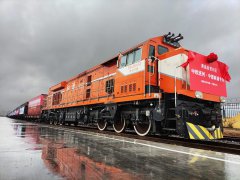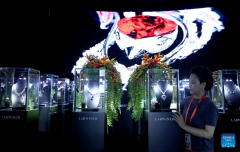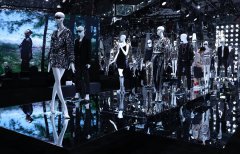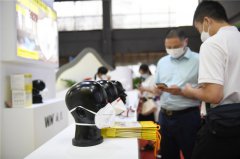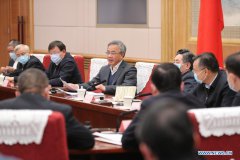Decked out in a stylish snowsuit and ski goggles, 32-year-old Li Yang leisurely roamed around and sampled the heady pleasures after hurtling down the slope at a ski resort in the eastern Chinese city of Huai'an.
"It's just trendy and cool to feel the joy of winter sports before Beijing 2022," said Li, an IT engineer who drove three hours from Nanjing to take part in a local ice and snow festival, hoping to destress a bit from the daily grind.
"It's my second time coming here. The difference is I bought my own gear this time rather than renting it. Many of my friends have their own equipment now," said Li.
"My entire set is made by Chinese brands, costing no more than 5,000 yuan (785 U.S. dollars), and is of great quality," he added.
While the Beijing Winter Olympics will officially kick off on Friday, Chinese manufacturers long ago saw a golden opportunity, as the Games have ignited unparalleled enthusiasm for winter sports and the country has rolled out multiple policies to enhance infrastructure and encourage innovation.
Over 346 million Chinese people have participated in winter sports activities since Beijing's successful bid in 2015, exceeding the country's goal of engaging 300 million in winter sports, according to China's National Bureau of Statistics.
China has also experienced explosive development in recent years despite being a latecomer in winter sports. China now has 654 standard ice rinks, a surge of 317 percent from 2015, and the number of ski resorts reached 803, up from 568 in 2015.
All this has fueled the business of equipment makers and bodes well for the long-term market. According to China's development plan, the total scale of the country's winter sports industry will hit 1 trillion yuan (157.2 billion U.S. dollars) by 2025.
"WHITE GOLD"
An increasing number of stores selling winter sports equipment, including suits, helmets, gloves and snowboards are popping up in large Chinese cities, though sometimes the prices for skiing-related merchandise are considered a bit high.
"For average skiers, a whole set could run from 2,000 to 10,000 yuan (310 to 1,570 U.S. dollars), but I think most buyers are white collar workers, earning above 10,000 a month," said Wang Juan, a sales manager at a chain store in downtown Nanjing.
Data from online marketplace JD.com showed that during last year's "Double 11" shopping festival, orders of ski-related equipment on the platform were 23 times higher than the previous year, while the transaction volume for ice sports equipment increased 15 times year-on-year.
"The Winter Olympics is obviously a catalyst for equipment business, and also a springboard for equipment makers," Wang said.
Li Longtai, executive vice president of Chongli Thaiwoo Ski Resort, said that more than half of visitors now bring their own gear. "Young people have become the major consumers, which indicates that the market has been diversified and the consumption ability of the new generation has risen."
Chinese brands are trying to position themselves in the bonanza. Athletic apparel giant Anta Sports, a sponsor of the Beijing Games, has made use of its deep pockets to partner with European equipment brands. Domestic brand Bosideng has also cooperated with German brand Bogner to establish a joint venture, planning to build about 80 stores across China.
A number of clothing brands like Toread and 361 Degrees have come out with their own ski suits, and others, including Running River and Vector, are producing varied personal ski equipment.
Data from corporate information provider Tianyancha shows that China saw an increase of more than 1,000 ice and snow sports-related enterprises in 2021. And according to a national development plan for ice and snow equipment industry, annual sales of the equipment are predicted to exceed 20 billion yuan (3.14 billion U.S. dollars) by 2022.
"As more customers are turning from thrill-seeking tyros to true-hearted enthusiasts, the future development of China's winter sports industry has rosy prospects," Wang said.
ON THE FAST TRACK
The first self-developed bobsleigh in China debuted last year, made of carbon fiber composite material and boasting an eight percent lower wind drag, significantly boosting athletes' performances.
A research and innovation consortium of 12 industry units was set up to make the homemade bobsleigh from scratch, including employing space technologies, said the Winter Sports Management Center of China's General Administration of Sport.
Beijing-based Carving Ski Group, a major supplier of equipment such as ice and snow makers and lighting systems, said China's manufacturing technologies need further improvement but are developing quickly.
This was indicated by a meeting held by China's Ministry of Industry and Information Technology (MIIT) last November, which was aimed at promoting production standards for equipment like snow vehicles, snowmakers and grooming machines.
While venues empowered by sci-tech innovations for the Beijing 2022 have been constructed one after another, Chinese-made snowmakers, smart ski simulators and ropeways have been widely employed at ski resorts across the country.
